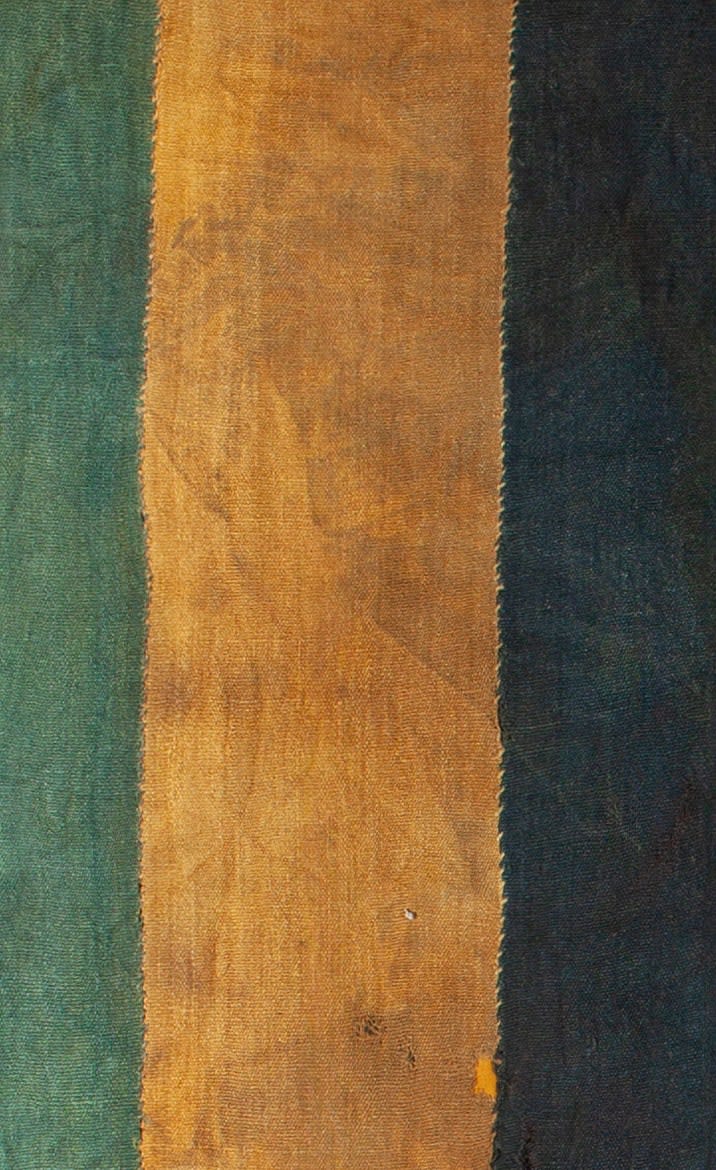Nazca Culture 100 BC-800 AD
Further images
Characterized by a striking pattern of contrasting color bands, this tunic presents a composition of refined, abstract lines that convey both clarity and sophistication. The deliberate arrangement of tones—carefully balanced in rhythm, hue, and varying widths—creates a dynamic visual cadence that is at once harmonious and elegant. This textile exemplifies a high degree of technical precision and an acute sensitivity to visual balance, showcasing the weaver’s mastery of both form and color.
The geometric structure of the tunic reflects the aesthetic principles of the Nazca culture, where abstraction, chromatic vibrancy, and symmetry were not only central to visual expression but also deeply intertwined with systems of social meaning. Such garments were often worn during ceremonial events or in the daily lives of elite individuals, functioning as potent symbols of identity, status, and ritual affiliation. As a result, they occupied a dual role—serving both as aesthetic masterpieces and as codified markers within the cultural and social fabric of Nazca society.







